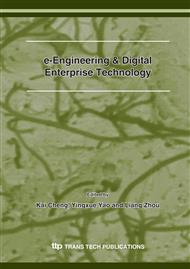[1]
W.S. Zhao, Q.G. Meng and Z.L. Wang: J. Mater. Proc. Tech, Vol. 129 (2002), pp.30-33.
Google Scholar
[2]
S. Das, M. Klotz and F. Klocke: J. Mater. Proc. Tech, Vol. 142 (2003), pp.434-451.
Google Scholar
[3]
T. Hirata, O.T. Guenat, T. Akashi, M.A. Gretillat and N.F. de Rooij: J. Microelectromech. S., Vol. 8 (1999), pp.523-528.
DOI: 10.1109/84.809068
Google Scholar
[4]
T. Hirata, O.T. Guenat, T. Akashi, M.A. Gretillat and N.F. de Rooij: Proc. Int. Symp. on Micromechatronics Hum. Sci. (Nagoya, Japan 1998), pp.77-82.
Google Scholar
[5]
Y.G. Wang and F.L. Zhao: J. Wuhan Univ. Tech., Vol. 28 (2006), pp.417-422.
Google Scholar
[6]
M. Kunieda and K. Yanatori: Int. J. Elec. Mach, Vol. 2 (1997), pp.43-49.
Google Scholar
[7]
K. Furutania, A. Sanetoa, H. Takezawaa, N. Mohri and H. Miyake: Precis. Eng. Nanotechnology, Vol. 25 (2001), pp.138-144.
Google Scholar
[8]
H. Noha, C. Indira, G.P. Nelson, and L.C. Male: Phys. Med. Biol, Vol. 48 (2003), p.3277.
Google Scholar
[9]
P. Atten, J.L. Coulomb and B. Khaddour: Ieee. T. Magn., Vol. 41 (2005), pp.1436-1439.
Google Scholar
[10]
M.D. Driga and A. Wu: Proc. 6th Int. Conf. Conduction Breakdown Solid Dielec. ( Vasteras, Sweden 1998), pp.543-547.
Google Scholar
[11]
V.V. Choulkov: Ieee. T. Dielect. El. In, Vol. 12 (2005), pp.98-103.
Google Scholar
[12]
A.M. Mahdy, H.I. Anis and S.A. Ward: Ieee. T. Dielect. El. In., Vol. 5 (1998), p.612.
Google Scholar
[13]
R. Coelho and B. Aladenize: Les dielectriques proprietes dielectriques des materiaux isolants (Science Press, China 2000).
Google Scholar
[14]
T.J. Lewis: Ieee. T. Dielect. El. In., Vol. 5 (1998), p.306.
Google Scholar
[15]
R.P. Pan, C.R. Sheu, and L. Lam: Chaos. Soliton. Fract., Vol. 6 (1995), pp.495-509.
Google Scholar
[16]
H.Z. Ding and B.R. Varlow, Ieee. T. Dielect. El. In., Vol. 12 (2005), pp.81-89.
Google Scholar
[17]
B. Meulenbroek: Streamer branching: conformal mapping and regularization. (Technische Universiteit, Eindhoven 2006).
Google Scholar
[18]
P. Pecas and E. Henriques: Int. J. Mach. Tool. Manu, Vol. 43 (2003), pp.1465-1471.
Google Scholar
[19]
Y.S. Wong, L.C. Lim, I. Rahuman and W.M. Tee: J. Mater. Proc. Tech., Vol. 79 (1998), pp.30-40.
Google Scholar
[20]
F. Klocke, D. Lung, G. Antonoglou and D. Thomaidis: J. Mater. Proc. Tech., Vol. 149 (2004), pp.191-197.
Google Scholar
[21]
H.K. Kansal, S. Singh and P. Kumar: J. Mater. Proc. Tech., Vol. 169 (2005), pp.427-436.
Google Scholar


